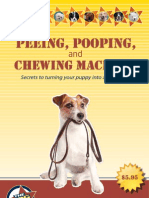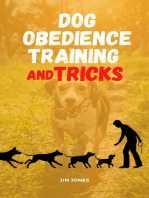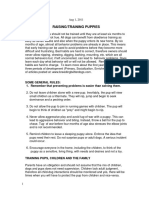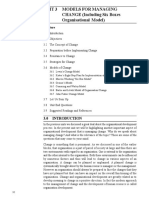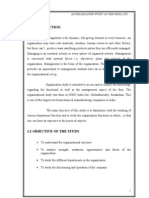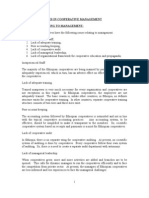Shiba Training Methods
Shiba Training Methods
Uploaded by
SindhutiwariCopyright:
Available Formats
Shiba Training Methods
Shiba Training Methods
Uploaded by
SindhutiwariOriginal Title
Copyright
Available Formats
Share this document
Did you find this document useful?
Is this content inappropriate?
Copyright:
Available Formats
Shiba Training Methods
Shiba Training Methods
Uploaded by
SindhutiwariCopyright:
Available Formats
SHIBA TRAINING METHODS These techniques have been thoroughly tested and researched by the Shiba Inu Training
Institute - so, after reading the mini course, we absolutely guarantee that you will be well on your way to having a loving, well-trained and perfectly obedient Shiba Inu! The techniques mentioned in this course will generally be applicable for both a puppy as well as an adult Shiba Inu. In case a particular technique is applicable only to a puppy or only to an adult Shiba Inu, we have mentioned that before discussing the technique. In this course, you will discover tips for 1. Housebreaking your Shiba Inu 2. Training your Shiba Inu & making it obedient 3. Teaching the basic commands to your Shiba Inu 4. Taking care of the diet of your Shiba Inu 5. Stopping your Shiba Inu from barking and biting and a lot, lot more! So, without wasting any more time, let's begin with today's topic - which is all about housebreaking your Shiba Inu.
1. Housebreaking your Shiba Inu
If done properly, housebreaking your Shiba Inu does not have to be as much of a hassle as some owners make it to be. Your Shiba Inu is a creature of habit. If it is taught where you want it to eliminate, and you control its food and water intake to regulate when it will eliminate, you will have a happy relationship relatively free of accidents. The biggest mistake made by Shiba Inu owners is inconsistency. It is important that you first choose the method of housebreaking appropriate for you and your pet and secondly stick with it. We know of many Shiba Inu owners who are impatient or inconsistent when housebreaking their pets. The end result is a pet that is never fully housebroken. So, remember the three P's - persistence, patience and praise, and you are guaranteed success. Here are the 3 methods you can use to housetrain your Shiba Inu: The Paper Method - The paper method seems to work better with a puppy than with an adult Shiba Inu, although it can be used on both. To begin housetraining your pup with the paper method, first you must choose a location where your puppy will be staying until housetrained. Make sure the room is puppy proofed and that elimination on the floor in this area will not cause permanent damage to your home. A bathroom or small kitchen is usually a good place for this. Once you have chosen an area, cover the entire floor with newspaper. If you have a young puppy, it will eliminate much more often than when it is older. So, just be prepared for many messes in the beginning. In the beginning, it is important to replace the paper as soon as possible after the elimination has occurred. This helps your puppy establish the area as its own, and it will help you get a better idea of where it favors doing its business. As your puppy eliminates throughout the day, it may go in several different areas of the room. But, as it gets a little more used to its room, it will choose a certain area where it prefers to eliminate. When its preferred area for elimination is established, begin removing the paper from the rest of the room, only covering the area it uses. Make sure you leave its papered area large enough so that it does not miss the paper. If it misses the paper, the area is too small and you need to add more paper. When it uses its papered area, praise it. The more your puppy associates a reward with its choice of the paper instead of the linoleum, the quicker your puppy will be trained. After it has established that it will use the papered area instead of the floor, begin moving the paper towards the area (presumably somewhere outside your house) where you want it to go when fully trained. The paper should only be moved a little at a time towards this location. If moving the paper confuses your puppy, you may only be able to move about one inch per day, until the paper reaches its final destination. Once your puppy understands that it is to eliminate only on the paper, and you have been able to move towards the area where it will eventually go outside, monitoring its habits will be much easier. Once the paper is completely removed, it will go to that area automatically and sniff or turn circles, letting you know it has to go out. Crate Training - Crate training can be used on both a puppy and an adult Shiba Inu and is probably the most effective and efficient way to housetrain your pet. No Shiba Inu will want to eliminate in a place it considers to be its own and therefore, unless left in its crate for too long, it will not eliminate in its crate.
Once every hour, place your Shiba Inu on a leash and walk it in the area where you want it to go potty. If it has not gone in five minutes, return it to its crate for another hour. After another hour goes by, the dog that did not go last time will most likely go this time. When it does go, be sure and praise it profusely and return it to its crate. The excitement in your voice when you are praising it will help it better understand that THIS is the place you want it to go. Once that is established, it will do its best to make you happy by eliminating in its designated area. Once you feel it understands where it is to go to potty, you may lessen its crate time, and begin opening up its area to more than just its crate. Be sure and open up its area a little at a time so it clearly establishes the larger area as "its area", increasing the desire to keep its area clean. Eventually, you will be able to open up your entire home, but this is only after a lot of time has been spent training and proof that it understands. Litter Pan Method - This method will have the best chance of success with an young puppy but an older Shiba Inu may be able to litter train with success as well. Similar to paper training, litter box training begins in a confined area such as a bathroom or kitchen. Although you may be able to use a traditional cat litter box for this purpose, pet supply stores do sell doggy litter boxes. They are shaped a little different and are a bit larger than the traditional kitty box. Also available are special litters and papers that should eventually be used in the box. Like paper training, the beginning stages have paper lining the entire floor of the room. You continually change any soiled paper until the puppy chooses a place on the floor it likes to eliminate. Once the puppy has eliminated in an area about the size of a litter pan for approximately two weeks, place a litter pan on the floor and paper inside the litter pan. When it goes and does its business inside the litter box, make sure to praise it profusely. It has got to establish this is the correct behavior before it will be comfortable with it. Once it is used to the litter box with the paper, you may begin the change to doggy litter if desired. As time goes on, you may add additional litter until eventually the paper is gone and only litter remains. If you choose this method, you must clean the litter box every time your Shiba Inu eliminates. It will not go in a dirty box. Failure to consistently clean thelitter box will result in your puppy reverting back to the floor. Follow any of the above 3 methods consistently, and you should soon have a fully housetrained Shiba Inu! There are dozens of other extremely important tips and techniques that you need to keep in mind before you can start housetraining your Shiba Inu. Plus, there are numerous mistakes that many new Shiba Inu owners make when they are housetraining their pets, and there isn't enough space here to cover all these mistakes.
2. Training your Shiba Inu & making it obedient
The key to success in training your Shiba Inu is understanding the psychology of your pet i.e. how its mind works, and then incorporating that with proven training techniques and a few training aids. Remember, your Shiba Inu is not a human and therefore does not think or react as a human would. Also, your pet does not verbally communicate with humans and you should not think that it does. It may recognize the word "out" and associate it with going outside, but that is only because it is a common action that occurs consistently before it goes outside. If you change the verbal word you use to communicate with your Shiba Inu along the way, your pet will no longer understand what you want. It is important that whatever word you choose to give a command, you stick with that same word each and every time, without the least alteration. Also, before you can even begin training your Shiba Inu, your must establish that you are the "Master" and your Shiba Inu is the "Follower". Remember, the Shiba Inu has an inherent trait that makes it a social animal, needing a dominance subordination hierarchy. You must establish that you are the leader of its pack before you will be successful with any type of training. This is called "social reinforcement". The following items will help you establish that leadership role in the life of your Shiba Inu: Do not compromise with your Shiba Inu. For example, if you want it to perform a desired behavior, don't just give up and walk away when it does not perform. Instead, use some type of reinforcement to show it that its behavior was not correct, such as withholding the treat or toy. You should always initiate interaction with your Shiba Inu and terminate the interaction with your Shiba Inu rather than the other way round. Avoid tending to your pet's every desire. Rewards should only be given for desired behavior, and should never be given just like that. When you are spending time with your Shiba Inu, pet, talk and touch it often. This will help establish the trust needed to truly set you forth as the leader. Obedience Training Styles: Just like housebreaking, when you are training your Shiba Inu, the key thing is consistency. You need to pick a training style that is suitable for you and your Shiba Inu and stick with it. The two most popular types of obedience training are leash and collar training and reward training. We won't have the time to describe these techniquesin detail in this email - so we will just give you a short overview of these techniques. In the leash and collar type of training, the leash is used in the beginning as the tool to teach the correct behavior, then once the behavior is learned, the leash is only used to correct unwanted behavior. A mistake often made by the novice owner with this type of training is they forget the leash is used only as a tool. Often a novice owner will abuse the leash to nag at the Shiba Inu.
This defeats the purpose of the leash. The leash must be used only to get the Shiba Inu to obey. It is used to establish the leadership role between master and pet, but to be successful in training, the Shiba Inu must understand the command with or without the leash and you must be able to utilize any tool at hand to solicit the correct behavior from your pet, not just a leash. Reward training usually incorporates food rewards or a reward that is associated with getting food. The associated award could be the command "Good". Many owners now use a clicker as an associated reward. A secret to making the reward trained Shiba Inu reliable is working the pet around distractions in its environment and teaching proper socialization. If you only train your Shiba Inu in the house, it will not be used to extra stimuli. The well trained Shiba Inu, then exposed to unfamiliar people, may not respond as desired. When reward training, it is important you train both inside and outside your home to make sure your Shiba Inu is exposed to as much stimuli as possible. Another important tool in communication between you and your Shiba Inu is the tone of your voice when delivering a command. The command "Good" will have a more positive tone. The excitement in your voice will be picked up by the Shiba Inu and it will eventually associate it with the feelings of acceptance for that response to the previous command. The word "No" will have a more forceful tone, usually associated with a negative response, such as a stern tug on the leash if leash training. The Shiba Inu will eventually establish that tone as an indication for an undesired response to your command. As you move on in your training, the tone will be as important to the Shiba Inu as the command itself. Also frequently overlooked by the novice owner is body language. Once you get to know your pet better, you will understand its meaning behind specific body motions. An owner who really understands his/her Shiba Inu will see even the slightest head movement in certain situations and understand exactly what it means. This enables the owner to give a command prior to a behavior occurring.
3. Teaching the basic commands to your Shiba Inu
Before we begin instructions for individual commands, it is important that you understand the pitfalls to avoid and tips for success when teaching the basic commands to your Shiba Inu. * Always use your pet's name when speaking to it. This will increase its attention to you when calling it or giving it a command. * When you give a command, enforce it. Do not repeat the command over and over again. If it does not respond to the command, manipulate its body into the command position if appropriate. Never give a command if you do not intend to enforce it. You will lose credibility with your Shiba Inu by doing this. * Always reinforce desired behavior. Reinforcement does not always have to be a treat. Your touch and voice can be enough reinforcement to help the Shiba Inu understand it did what you desired. * Never reinforce undesired behavior. No matter how they tilt their head or make you feel bad, never reinforce the undesired behavior. Remember, your Shiba Inu is also learning how to manipulate you. If it does not perform the desired command, it is imperativethat you ignore it, then try again in a few minutes. Eventually, it will respond to your command because of its born-in desire to please you. * Never punish desirable behavior. Many owners do not realize that when their Shiba Inu performs the desired action, such as going to the bathroom outside, and then the owner immediately walks away, they are punishing their Shiba Inu by ignoring them. Stay with your Shiba Inu after the desired behavior is performed. Make sure it understands that what it did was good and you are happy before leaving it. * A trick for success is keeping your Shiba Inu interested. Remember, a Shiba Inu will only learn if it is having fun. Know when to quit when training. Trying to do too much too soon will mentally exhaust the Shiba Inu and it will be much harder to train. We'll now discuss 2 of the basic commands that you should teach your Shiba Inu. However, because of space constraints, we won't have time to discuss all the basic commands that you should teach to your Shiba Inu. COME Teaching your Shiba Inu to come is one of the most important commands it will ever learn. It is also a command that will take a lot of time to successfully learn. Begin by waiting until your Shiba Inu is already approaching you, then when two to three feet away, useyour pet's name along with the command "COME" ("SCOUT COME"). Always use the name of your Shiba Inu first before you use the command. When the Shiba Inu gets to you, praise it. You should repeat this exercise as often as you can for several months. As your Shiba Inu begins to associate "COME" with a good thing, you can gradually increase the distance. If your Shiba Inu does not come, then it has not yet made the association of the word to the action. Give it time, it will eventually understand. The key to success with this command is for your Shiba Inu to always associate the command "COME" with a good thing. A common mistake made by novice handlers is they use a firm tone with the command causing the Shiba Inu to associate fear with the command. If a Shiba Inu fears you, its instinct will be to run away instead of coming near.
NEVER chase your Shiba Inu when using the command "COME". This is a sure way to teach your Shiba Inu that "COME" is a bad thing. Once you believe your Shiba Inu understands the command, begin to reinforce it. Put a lead on your pet's collar and allow the Shiba Inu to run around with the lead dragging behind. Gently pick up the lead, without the Shiba Inu noticing and say "SCOUT COME". If your Shiba Inu does not come, then gently pull the lead forcing it to come. Repeat this test often. Another exercise to test the "COME" command is having a family member walk the Shiba Inu, on a leash, away from you. Give the command "SCOUT COME" and see if the Shiba Inu comes. Repeat the command if it does not come the first time. If it does not come the second time, give a third command, but this time have the family member walk the Shiba Inu towards you until it reaches you. Be sure and give the Shiba Inu a lot of praise when it reaches you, even if the command was performed with assistance. OFF This command is used to tell your Shiba Inu that it should not touch an item with its mouth or paws. It can be taught by containing the Shiba Inu in a controlled environment with only a few items that may distract it. As soon as it reaches for one of the items, use the command "OFF", i.e. "SCOUT OFF". Praise it when itleaves the item alone. Eventually you can begin to walk it around and use the command "OFF" in a larger area. It will eventually understands that this means to leave the item alone when the command is used. It is an especially nice command to utilize when your Shiba Inu may be getting into a dangerous situation by touching something that could potentially hurt it. Well, that's all the time that we have for today. We will send the next email to you tomorrow. Tomorrow,we will discuss how to take care of the diet of your Shiba Inu. As we mentioned earlier, only a small fraction of all the basic commands that you need to teach your Shiba Inu has been mentioned in this email. There are lots of other important basic commands like HEEL, TAKE, DROP, SIT, DOWN, STAY, TOY, OUCH etc.
4. Taking care of the diet of your Shiba Inu
How you begin feeding your Shiba Inu will determine how she expects to be fed for the rest of her life. It is important to start off right with her feeding. There are many commercial brands available that will fit the specific needs of your Shiba Inu according to her age and physical characteristics. A common misconception among Shiba Inu owners is believing that feeding their pets table scraps is good practice. Unfortunately, this is completely false. Table scraps, although sometimes hard to resist feeding her, can cause problems. First of all, table scraps do not consist of the balanced diet your pet needs which can cause gastro-intestinal upset. Many owners do not realize that feeding their pet table scraps can encourage obnoxious behaviors such as begging and barking for food. Have you ever been at someone's home and watched their four footed friend beg at the table? Although you may think this is cute, remember, that Shiba Inu begs like that every time those people sit down to eat. Yes, morning, noon and night, they see their Shiba Inu either wobbling in a begging position or barking to get bites. If you start your Shiba Inu off on the right foot when eating, your Shiba Inu will be healthier and not a nuisance during your dinnertime. TYPES OF FEEDING Scheduled feeding and free feeding are two types of feeding you may offer your Shiba Inu. Both depend on your lifestyle and the personality and physical characteristics of your pet. Scheduled feedings usually take place in the morning and evening and consist of measured amounts of food. Free feeding is exactly as it sounds. You set a bowl full of food on the ground and the Shiba Inu eats whenever hungry. Dogs that are on scheduled feedings are sometimes more easily trained than those allowed to free feed. This is because food can be used as a reward, where if the Shiba Inu is free fed, food may not be an adequate reward because the Shiba Inu can have it anytime she likes. If your Shiba Inu eats excessively or is overweight, free feeding is probably not the best choice for your pet. Also, if your pet spends many hours alone during the day, free feeding is not a good choice. What goes in must come out and if your Shiba Inu eats while you are away, she may need to eliminate prior to your return. There are many brands of Shiba Inu food available, and the most expensive brand is not necessarily the best. The bags or cans of food themselves will give you a guide on how much of that particular food you should feed your Shiba Inu according to her weight. You can adjust the recommended amount based on the amount of exercise your Shiba Inu gets and the climate in which she lives. If your Shiba Inu spends the majority of her time in hot weather, she will not need the caloric intake of a cold weather Shiba Inu. Also, you will find that your Shiba Inu may have an allergy to corn based foods. It may develop sores and scabs on its skin from excessive scratching. Once the corn- based food is eliminated from its diet, the sores go away. This is one reason many vets recommend a lamb and rice formula for your Shiba Inu.
Feeding Your Puppy - Puppies should be fed several regularly scheduled meals every day throughout the first three months of life. This will help prevent bloat. As your puppy gets older, you can reduce the feedings to two meals per day, morning and evening or offer free feeding as an alternative choice. Puppies require more calories and fat to grow. Talk to your veterinarian about what type of food to feed your puppy through her first year of life. Many recommend specific brands and most recommend a food without a lot of additives. Feeding Your Adult Shiba Inu - A Shiba Inu is considered an adult from about one year to six years of age. This time period should have a balanced diet of quality food, offered according to the weight of your Shiba Inu, and rich in the vitamins and minerals needed to promote a healthy life. Once again, consult with your veterinarian on the brand they would recommend for your particular breed of Shiba Inu. The vet should also have a medical history established by this time so they will also be able to add additional insight based on potential allergies or weight problems your Shiba Inu may exhibit. Feeding Your Older Shiba Inu - Most older pets retain their ability to digest the essential nutrients from food well into old age. However, some older dogs do require an adjustment in their food intake dependent on their amount of physical exercise. An older Shiba Inu is usually not as active and therefore requires a reduction in calories. Special food, designed for the older Shiba Inu, is generally a good idea. Most of these formulas contain moderate levels of high quality, highly digestible protein as well as modified levels of polyunsaturated fat and vitamins B and E for better digestibility and health of your older pet. Well, that's all the time that we have for today. We will send the next email to you tomorrow. Tomorrow,we will discuss how to stop your Shiba Inu frombarking and biting. The tips discussed in this email should give you a good starting point to determine what to feed your Shiba Inu. Just to give you an example, we did not have the time to discuss exactly what quantities of different vitamins (Vitamins A, B, C, D, E, K etc.) and minerals should be given to a puppy, adult or older Shiba Inu. This is present in our Shiba Inu Lovers Membership Site in the form of a chart outlining the different quantities of each vitamin and mineral that should be given to a puppy, adult or older Shiba Inu.
5. Stopping your Shiba Inu from barking and biting
STOP BARKING If your Shiba Inu is barking or howling when ignored, then it is most probably because it suffers from separation anxiety. Separation anxiety usually initiates with fear and insecurities. If your Shiba Inu is yapping at the neighbors through the fence and annoying them, then behavior modification is the key. You can teach your Shiba Inu a reverse command to stop the barking, or utilize anti-bark collars as a deterrent. To teach your Shiba Inu a reverse command, it must first know the command "SPEAK". The SPEAK command is used to teach the Shiba Inu to bark, but only when you tell it to (i.e. bark on demand). Once it has mastered the SPEAK command, think of another word to tell the Shiba Inu to stop barking . Whatever word you choose it should be one word and preferably one syllable if possible. This process of first teaching your Shiba Inu to bark on demand may seem counter-intuitive when your objective is to make it stop barking unnecessarily, but we have found that it works brilliantly in reality. Anti-bark collars come in two types - radio and herbal spray. The radio collars deliver a mild shock when the Shiba Inu starts to bark. The collar has prongs that must touch the front of the neck of your Shiba Inu so the vibrations of the barking trigger the shock. The herbal spray collars work the same way, only the vibrations trigger a mist of pungent citrus-scented fog into your pet's face. The mist startles the Shiba Inu and interrupts the barking. STOP BITING If your Shiba Inu has the habit of biting you or other members of your family, you can use some of the following techniques to stop it from doing so: One good tool to utilize in teaching your Shiba Inu not to bite is to not use toys and activities that encourage biting. A perfect example of this is tug of war. Although a popular playtime activity for an owner and his/her Shiba Inu, it encourages the Shiba Inu to bite leading to unwanted behavior problems. Once your Shiba Inu is trained and fully understands the "Off" command, you may tug-of-war with your pet. Until then, it is best to put the rope away. Another common mistake made by Shiba Inu owners that encourages biting is rough housing. How many of us have either seen, or participated ourselves, in growling at our Shiba Inu and letting it grab our hands in its mouth during play. Then, when the Shiba Inu bites too hard, we scold it and tell it "no bite". We are completely confusing our Shiba Inu by doing this if it has not yet been trained to understand hard bites from soft bites. If your Shiba Inu has a great propensity to bite when playing, it is a good idea to keep your hands away from its face when playing or petting. This will discourage the biting by removing the item it is trying to bite. Never reward mouthing, snapping or grabbing types of behavior. An example would be playing with your Shiba Inu even after it has grabbed a toy from your hand. In this instance, you should stop playing and ignore your Shiba Inu. Continuing to play will enable it to think the grabbing behavior was acceptable and it will continue in the future. This could result in it later grabbing food or other items, unintentionally injuring someone or another animal.
Once your Shiba Inu has established that mouthing or biting is not the appropriate response in most instances, it is important you teach it when it IS an appropriate response. Retrieving would be an example of a time that it is appropriate for your Shiba Inu to mouth or bite. You can teach your Shiba Inu to retrieve on command. This enables you to offer something different for your Shiba Inu to mouth when biting by distracting it with an appropriate toy to bite. Another approach to stop the unwanted biting behavior is to simply stop interacting with the Shiba Inu and ignore it for a period of time. Also, apart from barking and biting, there are several other behavior problems like jumping on people, digging, short attention spans, excessive energy etc.
You might also like
- Puppy Training 100Document28 pagesPuppy Training 100koblu100% (5)
- Protocol For Relaxation - Karen OverallDocument12 pagesProtocol For Relaxation - Karen OverallSean Carlo CastilloNo ratings yet
- Dog Training: An Incredibly Easy Method of Dog Training for Busy People: A Simple Step-by-Step Approach to a Happy, Obedient, and Well-Trained DogFrom EverandDog Training: An Incredibly Easy Method of Dog Training for Busy People: A Simple Step-by-Step Approach to a Happy, Obedient, and Well-Trained DogNo ratings yet
- Puppy Training: The Complete Guide To Housebreak Your Puppy in Just 7 DaysFrom EverandPuppy Training: The Complete Guide To Housebreak Your Puppy in Just 7 DaysRating: 5 out of 5 stars5/5 (1)
- Brought To You byDocument29 pagesBrought To You byRaj RoyNo ratings yet
- Puppy Training for Beginners: 21 Simple Techniques To Train Your Puppy FastFrom EverandPuppy Training for Beginners: 21 Simple Techniques To Train Your Puppy FastNo ratings yet
- Teach Your Dog To Pee And Poop Outside: Housetraining Made EasyFrom EverandTeach Your Dog To Pee And Poop Outside: Housetraining Made EasyNo ratings yet
- Dog Tricks: Best Smart Dog Tricks to Teach Your Dog in Record TimeFrom EverandDog Tricks: Best Smart Dog Tricks to Teach Your Dog in Record TimeNo ratings yet
- Quick and Easy Puppy Training. Top tips for training your new puppyFrom EverandQuick and Easy Puppy Training. Top tips for training your new puppyNo ratings yet
- NJK 9Document2 pagesNJK 9dsaNo ratings yet
- Dog Training at Home Manual for Puppies & Beyond: One Month Tricks, Training, & Tips Program!From EverandDog Training at Home Manual for Puppies & Beyond: One Month Tricks, Training, & Tips Program!No ratings yet
- How to Potty Train a Puppy... in 7 Days or Less! The Best Beginner's Guide to House Training Your Pup Quickly and EasilyFrom EverandHow to Potty Train a Puppy... in 7 Days or Less! The Best Beginner's Guide to House Training Your Pup Quickly and EasilyNo ratings yet
- Raising/Training Puppies: Some General Rules: 1. Remember That Preventing Problems Is Easier Than Solving ThemDocument7 pagesRaising/Training Puppies: Some General Rules: 1. Remember That Preventing Problems Is Easier Than Solving ThemclitNo ratings yet
- Who's Training Whom?: Six Easy Lessons to Put Any Dog Owner Back in the Driver's Seat and in Control of Their Dog.From EverandWho's Training Whom?: Six Easy Lessons to Put Any Dog Owner Back in the Driver's Seat and in Control of Their Dog.No ratings yet
- The Essential Guide for Training Dogs & Puppies at Home: Exercises, Hacks, Tips, Tricks & TrainingFrom EverandThe Essential Guide for Training Dogs & Puppies at Home: Exercises, Hacks, Tips, Tricks & TrainingNo ratings yet
- Puppy Training: The Easiest and Most Effective Way to Educate Your Dog in 7 DaysFrom EverandPuppy Training: The Easiest and Most Effective Way to Educate Your Dog in 7 DaysNo ratings yet
- Puppy Training: How to Housebreak Your Puppy in Only 7 DaysFrom EverandPuppy Training: How to Housebreak Your Puppy in Only 7 DaysRating: 3 out of 5 stars3/5 (2)
- How To Potty Train Your Puppy: Complete Step By Step Guide On Potty And Crate Training For PuppiesFrom EverandHow To Potty Train Your Puppy: Complete Step By Step Guide On Potty And Crate Training For PuppiesNo ratings yet
- 01 New PuppyDocument2 pages01 New PuppymysticpaganNo ratings yet
- Puppy Training Simplified: The Simple Art of Training Your Puppy to Be a Great Companion & DogFrom EverandPuppy Training Simplified: The Simple Art of Training Your Puppy to Be a Great Companion & DogNo ratings yet
- Here Boy! Step-by-step to a Stunning Recall from your Brilliant Family Dog: Essential Skills for a Brilliant Family Dog, #4From EverandHere Boy! Step-by-step to a Stunning Recall from your Brilliant Family Dog: Essential Skills for a Brilliant Family Dog, #4No ratings yet
- Dog Training: The Best Dog Training Guide With Step By Step Instructions For A Happy, Obedient, Well Trained DogFrom EverandDog Training: The Best Dog Training Guide With Step By Step Instructions For A Happy, Obedient, Well Trained DogNo ratings yet
- Puppy Training: Housebreaking a Puppy and Working Full Time Can Be Done!From EverandPuppy Training: Housebreaking a Puppy and Working Full Time Can Be Done!Rating: 5 out of 5 stars5/5 (1)
- How to Train Your Dog or Puppy: 4 Weeks Tips, Tricks, & Training ProgramFrom EverandHow to Train Your Dog or Puppy: 4 Weeks Tips, Tricks, & Training ProgramNo ratings yet
- Module 16: Training Dogs - More On How Dogs LearnDocument11 pagesModule 16: Training Dogs - More On How Dogs LearnOana DumbravaNo ratings yet
- Dog & Puppy Training Guide for Beginners: Best Step-by-Step Dog Training Guide for Kids and Adults: Includes Potty Training, 101 Dog tricks, Eliminate Bad Behavior & Habits, and more.From EverandDog & Puppy Training Guide for Beginners: Best Step-by-Step Dog Training Guide for Kids and Adults: Includes Potty Training, 101 Dog tricks, Eliminate Bad Behavior & Habits, and more.No ratings yet
- House-Training Made Easy!: Congratulations On Adopting Your New Family Member!Document2 pagesHouse-Training Made Easy!: Congratulations On Adopting Your New Family Member!JamieNo ratings yet
- Not in the House!: The Ultimate Guide to Potty Training Your PuppyFrom EverandNot in the House!: The Ultimate Guide to Potty Training Your PuppyNo ratings yet
- Susan Garrett Muffin Tin GameDocument3 pagesSusan Garrett Muffin Tin GamejakepassmanNo ratings yet
- Dog and Puppy Training 101 - The Essential Handbook: Dog Care and Health: Raising Well-Trained, Happy, and Loving PetsFrom EverandDog and Puppy Training 101 - The Essential Handbook: Dog Care and Health: Raising Well-Trained, Happy, and Loving PetsNo ratings yet
- Dog Training: 20 Smart Dog Tricks You Can Teach Your DogFrom EverandDog Training: 20 Smart Dog Tricks You Can Teach Your DogRating: 4.5 out of 5 stars4.5/5 (3)
- Sounds Soothing Booklet Dogs TrustDocument28 pagesSounds Soothing Booklet Dogs Trustyeomans888No ratings yet
- How To Train Your PuppyDocument26 pagesHow To Train Your PuppyCyril Adina100% (1)
- Dog Training GuideDocument11 pagesDog Training GuideRas FazNo ratings yet
- Dog Training: Unveiling Expert Techniques for Effective (Perfect Care, Understanding and Training for Caucasian Mountain Dog)From EverandDog Training: Unveiling Expert Techniques for Effective (Perfect Care, Understanding and Training for Caucasian Mountain Dog)No ratings yet
- 30 Day Perfect Pup With Zak GeorgeDocument53 pages30 Day Perfect Pup With Zak GeorgeJedidiah Carl Tan91% (11)
- Puppy Training: Housebreaking a Puppy in Record Time, The Ideal Beginner's BundleFrom EverandPuppy Training: Housebreaking a Puppy in Record Time, The Ideal Beginner's BundleNo ratings yet
- Puppy Problems: Simple Steps for Solving Common Puppy Behavior ProblemsFrom EverandPuppy Problems: Simple Steps for Solving Common Puppy Behavior ProblemsNo ratings yet
- Puppy Training Guide for Beginners: How to Train Your Dog or Puppy for Kids and Adults, Following a Step-by-Step Guide: Includes Potty Training, 101 Dog tricks, Eliminate Bad Behavior & Habits, and more.From EverandPuppy Training Guide for Beginners: How to Train Your Dog or Puppy for Kids and Adults, Following a Step-by-Step Guide: Includes Potty Training, 101 Dog tricks, Eliminate Bad Behavior & Habits, and more.No ratings yet
- Team Learning in Organizations: A Review and IntegrationDocument29 pagesTeam Learning in Organizations: A Review and IntegrationSindhutiwariNo ratings yet
- Conditional ProbabilityDocument8 pagesConditional ProbabilitySindhutiwariNo ratings yet
- Report WritingDocument5 pagesReport WritingSindhutiwariNo ratings yet
- Managing Work Related StressDocument11 pagesManaging Work Related StressSindhutiwariNo ratings yet
- Modern MetodsDocument6 pagesModern MetodsSindhutiwariNo ratings yet
- Strategic Communication For ExecutivesDocument3 pagesStrategic Communication For ExecutiveslatyrniangNo ratings yet
- 2011 1 Training Manual On Material ManagementDocument119 pages2011 1 Training Manual On Material ManagementMaheshNo ratings yet
- HRM Strategy and AnalysisDocument27 pagesHRM Strategy and AnalysisMuhammad BilalNo ratings yet
- Unit 3 Models For Managing CHANGE (Including Six Boxes Organisational Model)Document15 pagesUnit 3 Models For Managing CHANGE (Including Six Boxes Organisational Model)sonali tanejaNo ratings yet
- Agility As A Mindset - AHRCP V022021 enDocument15 pagesAgility As A Mindset - AHRCP V022021 enRafael Angulo RuizNo ratings yet
- Exploring Corporate Strategy: Gerry Johnson, Kevan Scholes, Richard WhittingtonDocument26 pagesExploring Corporate Strategy: Gerry Johnson, Kevan Scholes, Richard Whittingtonnazish143No ratings yet
- Sustainability The Elusive Element of Process Improvement 2005Document20 pagesSustainability The Elusive Element of Process Improvement 2005Anonymous JqN1XeLhNo ratings yet
- Power and Politics Organization Theory: From Power in Decision Making of Pfeffer To Power Game of MintzbergDocument9 pagesPower and Politics Organization Theory: From Power in Decision Making of Pfeffer To Power Game of MintzbergDdNo ratings yet
- MarkingScheme-Set2Document17 pagesMarkingScheme-Set2suneetha.jsspshsrNo ratings yet
- Interim ReportDocument30 pagesInterim ReportLameez Omarjee100% (3)
- The Challenge of Good Governance inDocument7 pagesThe Challenge of Good Governance inAshish GuptaNo ratings yet
- Chapter-3: ERP and Related TechnologiesDocument20 pagesChapter-3: ERP and Related Technologiesvijitha_v16No ratings yet
- Boardroom Briefing 6Document36 pagesBoardroom Briefing 6Adrian Satriaji WiryawanNo ratings yet
- Oen India LTDDocument77 pagesOen India LTDSandeep Nair100% (1)
- Clauses+of+ISO+9001 2015Document2 pagesClauses+of+ISO+9001 2015Febri RiyanzNo ratings yet
- ANWARUZZAMAN Mohammad: Analytical AbilityDocument6 pagesANWARUZZAMAN Mohammad: Analytical Abilityandrew-usNo ratings yet
- Steps For Building Implementing A Balanced ScorecardDocument3 pagesSteps For Building Implementing A Balanced ScorecardMohamed AdelNo ratings yet
- Source: PMBOK Guide - Sixth Edition + Agile Practice GuideDocument5 pagesSource: PMBOK Guide - Sixth Edition + Agile Practice GuideShao Hong WengNo ratings yet
- Business Communication Project ZONGDocument40 pagesBusiness Communication Project ZONGAamir Raza57% (7)
- London MBADocument24 pagesLondon MBABhandari LakshmiprasadNo ratings yet
- Nurs 406 e FolioDocument4 pagesNurs 406 e Folioapi-273787321No ratings yet
- Business Ethics and Social Responsibility Grade 12Document104 pagesBusiness Ethics and Social Responsibility Grade 12Raymond RocoNo ratings yet
- Leadership - Are You A - Johnny BravoDocument18 pagesLeadership - Are You A - Johnny Bravoavav28No ratings yet
- Employee Handbook Final SmallDocument66 pagesEmployee Handbook Final SmallCricket KheloNo ratings yet
- Nle ReviewerDocument104 pagesNle ReviewerTed ChrisNo ratings yet
- Case Study Nursing LeadershipDocument2 pagesCase Study Nursing LeadershipJulie S HeyNo ratings yet
- When Marketing Is Strategy-SummeryDocument2 pagesWhen Marketing Is Strategy-SummeryAnwar Iqbal100% (3)
- Chapter-10: Issues in Cooperative Management 10.1 Issues Relating To ManagementDocument3 pagesChapter-10: Issues in Cooperative Management 10.1 Issues Relating To Managementalex266No ratings yet
- Renfrew County Community Study Executive SummaryDocument24 pagesRenfrew County Community Study Executive SummaryShawna BabcockNo ratings yet
- Chat GPT PromptDocument51 pagesChat GPT PromptSiti Baizura MahatNo ratings yet
